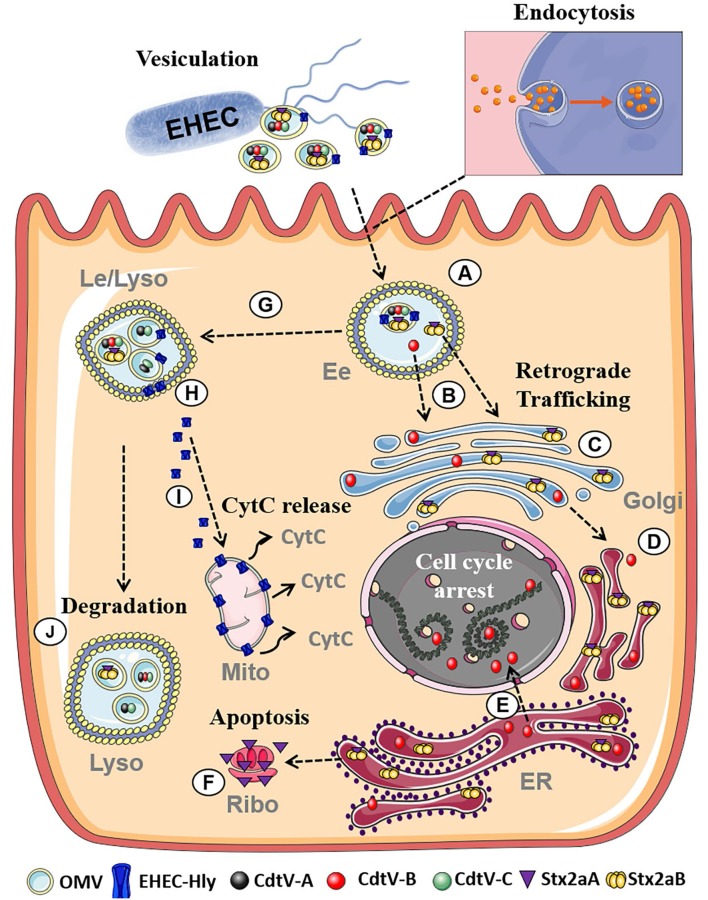Figure 2.
Summary of intracellular trafficking of EHEC O157 OMVs and OMV-delivered toxins (based on Bielaszewska et al., 2013, 2017). After uptake via dynamin-dependent endocytosis, O157 OMVs carrying the toxin cocktail enter the endosomal compartments of target cells (A). Stx2a holotoxin and CdtV-B subunit separate from OMVs in early endosomes (B) and are retrogradely transported to the Golgi complex (C) and the endoplasmic reticulum (D). From the endoplasmic reticulum, CdtV-B is translocated to the nucleus to target DNA and cause cell-cycle arrest (E), and Stx2a A1 catalytic fragment to the cytosol to reach ribosomes and induce apoptosis (F). CdtV-A and CdtV-C subunits and EHEC-Hly are sorted with OMVs to late endosomes/lysosomes (G). Here EHEC-Hly separates from OMVs, escapes from the lysosomes (H), and is transported to the mitochondria where it causes release of cytochrome C (I). CdtV-A and CdtV-C remain OMV-associated and are degraded with OMVs in lysosomes (J). Moreover, residual subsets of CdtV-B and Stx2a, which did not separate from OMVs in early endosomes, are sorted with OMVs to lysosomes for degradation. Figure was taken from Bielaszewska et al. (2017) and modified using Servier Medical Art. (Ee, Early endosomes; Le, Late endosomes; Lyso, Lysosomes; Golgi, Golgi Apparatus, ER, Endoplasmatic reticulum; Ribo, Ribosome; Mito, Mitochondria, CytC, Cytochrome C).

